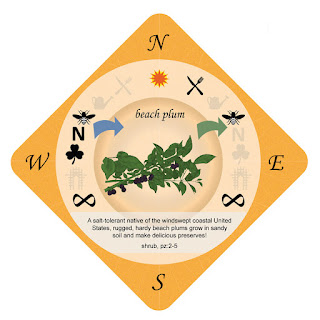This is not just a dream. Many carefully designed food forests really do exist, adapted to almost any climate, providing thousands of pounds of food per acre with less maintenance (but trickier harvesting) than conventional agriculture. It is a model more suited to participatory and local agriculture than to factory farms. Many large food producers might see this as a downside but, as Bill Mollison might say, perhaps the problem is really the solution! Industrial agriculture has been very successful at creating large amounts of food. But this model is based on the assumption of unlimited fossil fuel input and unlimited pollution output. It is probable that this risky model will not be the best long-term solution to our food needs and, just maybe, a little more active participation is what we all need!
 |
| American Groundnut (Apios Americana) |
 |
| Hen House Playing Card |
I did not invent the term "food forest". About five years ago, I Googled the phrase "forests made of food plants" and soon ran across Bill Mollison's writings on Permaculture. Eric Toensmeier & Jonathan Bates's book Paradise Lot about Food Forest Farm was also inspirational, not to mention Sepp Holzer's wonderfully quirky innovations. My dream soon turned to obsession. I enrolled in Geoff Lawton's Permaculture Design Course and committed myself to spreading the word about this environmentally sustainable philosophy.
 |
| Beach Plum Playing Card |


Hi there,
ReplyDeletegreat work!
In Germany there is also someone working on developing a card set, so far only in German though.
http://www.edition-essentia.de/waldgaertner.html
Maybe google translate can help some?
His cards will include only perennial food forest species, an envisioned total of 175. Maybe the two of you can connect and make an improved version together? Or maybe you could use some of his work to develop a regional variation of your set?
Good luck with your endeavour!
Wow! Looks like they are doing a beautiful job. Unfortunately, my German is terribly weak. Thanks for the heads up!
ReplyDelete